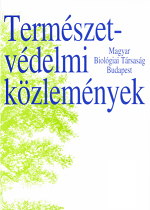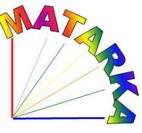Énekesmadarak fogásszámának középtávú változása egy dél-tiszántúli fásításban
Absztrakt
Munkám során 25 állandó és vonuló énekesmadár-faj befogott egyedeinek éves mennyiségének változását vizsgáltam egy dél-tiszántúli antropogén fás területen. Ehhez 11 916 gyűrűzési adatot használtam fel a 2016 és 2024 közötti kilenc év őszi időszakaiból. A legtöbb faj esetében nem lehet meghatározni egyértelmű trendet, aminek elsődleges oka az állomány nagyságának költési sikertől függő erős évenkénti fluktuációja. A nádasban fészkelő fajok fogásszáma csökkent, a mezőgazdasági területeken fészkelőké stabil volt, de az eredmény egyik esetben sem volt szignifikáns. Az erdei fajok közül a kerti geze fogásszáma szignifikánsan csökkent, míg az ökörszemé és a kis poszátáé szignifikánsan nőtt. Erős növekedés jellemezte a fülemülét is. A terepi adatgyűjtés folytatására a madarak állományának hosszabb távú változásának detektálása miatt is szükség van.
Hivatkozások
Atkinson, P. W., Fuller, R. A., Gillings, S., Vickery, J. A. (2006): Counting birds on farmland habitats in winter. Bird Study 53(3): 303–309. https://doi.org/10.1080/00063650609461446
Benton, T. G., Vickery, J. A., Wilson, J. D. (2003): Farmland biodiversity: is habitat heterogeneity the key? Trends in Ecology & Evolution 18(4): 182–188. https://doi.org/10.1016/S0169-5347(03)00011-9
Bozó, L. (2020): The role of reedbeds in secondary habitats during the migration and breeding of reed warblers. Ornis Hungarica 28(1): 76–91. https://doi.org/10.2478/orhu-2020-0006
Bozó, L., Bozóné Borbáth, E. (2019): Extrém kékcinege-vonulás agrárterületen. Madártávlat 26(3): 28.
Bozó, L., Csörgő, T. (2024): Idegenhonos fafajok állományainak szerepe a hosszútávú vonuló énekesmadarak pihenőhely-használatában. Természetvédelmi Közlemények 30: 1–17. https://doi.org/10.20332/tvk-jnatconserv.2024.30.15842
Bozó, L., Németh, Á., Csörgő, T. (2023): Long-term population changes of the Moustached Warbler in a Central Hungarian wetland habitat. Ornis Hungarica 31(2): 89–98. https://doi.org/10.2478/orhu-2023-0021
Bozó, L., Rozgonyi, J., Csathó, A. I. (2021): A Natura 2000 területek természetvédelmi jelentősége az agrártájban: esettanulmány a lőkösházi Turai-gyep tájban betöltött szerepéről. Természetvédelmi Közlemények 27: 77–97. https://doi.org/10.20332/tvk-jnatconserv.2021.27.77
Brodier, S., Augiron, S., Cornulier, T., Bretagnolle, V. (2014): Local improvement of skylark and corn bunting population trends on intensive arable landscape: a case study of the conservation tool Natura 2000. Animal Conservation 17(3): 204–216. https://doi.org/10.1111/acv.12077
Csörgő, T., Karcza, Zs., Halmos, G., Magyar, G., Gyurácz, J., Szép, T., Bankovics, A., Schmidt, A., Schmidt, E. (szerk.) (2009): Magyar madárvonulási atlasz. Kossuth Kiadó Zrt., Budapest, 672 p.
De Vries, E. H. J., Foppen, R. P., Van Der Jeugd, H., Jongejans, E. (2022): Searching for the causes of decline in the Dutch population of European Turtle Doves (Streptopelia turtur). Ibis 164(2): 552–573. https://doi.org/10.1111/ibi.13031
Donald, P. F., Sanderson, F. J., Burfield, I. J., Van Bommel, F. P. (2006): Further evidence of continent-wide impacts of agricultural intensification on European farmland birds, 1990–2000. Agriculture, Ecosystems & Environment 116(3–4): 189–196. https://doi.org/10.1016/j.agee.2006.02.007
Engler, J. O., Rödder, D., Elle, O., Hochkirch, A., Secondi, J. (2013): Species distribution models contribute to determine the effect of climate and interspecific interactions in moving hybrid zones. Journal of Evolutionary Biology 26(11): 2487–2496. https://doi.org/10.1111/jeb.12244
Fraixedas, S., Lindén, A., Lehikoinen, A. (2015): Population trends of common breeding forest birds in southern Finland are consistent with trends in forest management and climate change. Ornis Fennica 92(4): 187–203. https://doi.org/10.51812/of.133879
Franzoi, A., Tenan, S., Sanchez, P. L., Pedrini, P. (2021): Temporal trends in abundance and phenology of migratory birds across the Italian Alps during a 20-year period. Rivista Italiana di Ornitologia 91(2): 13–28. https://doi.org/10.4081/rio.2021.528
Goławski, A. (2006): Changes in numbers of some bird species in the agricultural landscape of eastern Poland. Ring 28(2): 127–133. https://doi.org/10.2478/v10050-008-0036-8
Greenwood, J. J. D., Baillie, S. R., Crick, H. P. Q., Marchant, J. H., Peach, W. J. (1993): Integrated population monitoring: detecting the effects of diverse changes. In: Furness, R. W., Greenwood, J. J. D. (eds.): Birds as monitors of environmental change. Chapman and Hall, London, pp. 267–328.
Gyurácz, J., Bánhidi, P., Góczán, J., Illés, P., Kalmár, S., Koszorús, P., Lukács, Z., Németh, Cs., Varga, L. (2017): Bird number dynamics during the post-breeding period at the Tömörd Bird Ringing Station, western Hungary. Ring 39: 23–82. https://doi.org/10.1515/ring-2017-0002
Hanane, S. (2017): The European turtle-dove Streptopelia turtur in Northwest Africa: a review of current knowledge and priorities for future research. Ardeola 64(2): 273–287. https://doi.org/10.13157/arla.64.2.2017.rp1
Haran, R., Shachal, R., Izhaki, I. (2019): Effects of extreme habitat loss on a local population of Reed Warblers Acrocephalus scirpaceus. Ringing & Migration 34(2): 103–112. https://doi.org/10.1080/03078698.2019.1830533
Haraszthy, L. (2019): Magyarország fészkelő madarainak költésbiológiája. 2. kötet. Sárgarigóféléktől a sármányfélékig (Passeriformes). Pro Vértes Nonprofit Zrt., Csákvár, 827 p.
Harrison, N., Whitehouse, M. (2012): Drivers of songbird productivity at a restored gravel pit: Influence of seasonal flooding and rainfall patterns and implications for habitat management. Agriculture, Ecosystems & Environment 162: 138–143. https://doi.org/10.1016/j.agee.2012.09.004
Jokimäki, J., Clergeau, P., Kaisanlahti‐Jokimäki, M. L. (2002): Winter bird communities in urban habitats: a comparative study between central and northern Europe. Journal of Biogeography 29(1): 69–79. https://doi.org/10.1046/j.1365-2699.2002.00649.x
Kamp, J., Frank, C., Trautmann, S., Busch, M., Dröschmeister, R., Flade, M., Gerlach, B., Karthäuser, J., Kunz, F., Mitschke, A., Schwarz, J., Sudfeldt, C. (2021): Population trends of common breeding birds in Germany 1990–2018. Journal of Ornithology 162(1): 1–15. https://doi.org/10.1007/s10336-020-01830-4
Keller, V., Herrando, S., Voríšek, P., Franch, M., Kipson, M., Milanesi, P., Martí, D., Anton, M., Klvanová, A., Kalyakin, M. V., Bauer, H-G., Foppen, R. P. B. (eds.) (2020): European Breeding Bird Atlas 2. Distribution, Abundance and Change. European Bird Census Council & Lynx Edicions, Barcelona, 967 p.
Kiss, Cs., Karcza, Zs., Lukács, K. O., Winkler, D., Gyurácz, J. (2023): Population trend and breeding productivity of some migrant passerines in Hungary. Ornis Hungarica 31(2): 74–88. https://doi.org/10.2478/orhu-2023-0020
Kosicki, J. Z., Chylarecki, P., Zduniak, P. (2014): Factors affecting Common Quail’s Coturnix coturnix occurrence in farmland of Poland: is agriculture intensity important? Ecological Research 29: 21–32. https://doi.org/10.1007/s11284-013-1093-2
Maggini, I., Cardinale, M., Favaretto, A., Voříšek, P., Spina, F., Maoret, F., Ferri, A.,Riello, S., Fusani, L. (2021): Comparing population trend estimates of migratory birds from breeding censuses and capture data at a spring migration bottleneck. Ecology and Evolution 11(2): 967–977. https://doi.org/10.1002/ece3.7110
Moreau, J., Rabdeau, J., Badenhausser, I., Giraudeau, M., Sepp, T., Crépin, M., Gaffard, A. Bretagnolle, V., Monceau, K. (2022): Pesticide impacts on avian species with special reference to farmland birds: a review. Environmental Monitoring and Assessment 194(11): 790. https://doi.org/10.1007/s10661-022-10394-0
Nuijten, R. J., Vriend, S. J., Wood, K. A., Haitjema, T., Rees, E. C., Jongejans, E., Nolet, B. A. (2020): Apparent breeding success drives long‐term population dynamics of a migratory swan. Journal of Avian Biology 51(11): e02574. https://doi.org/10.1111/jav.02574
Poulin, B., Lefebvre, G., Mauchamp, A. (2002): Habitat requirements of passerines and reedbed management in southern France. Biological Conservation 107(3): 315–325. https://doi.org/10.1016/S0006-3207(02)00070-8
Reif, J. (2013): Long-term trends in bird populations: a review of patterns and potential drivers in North America and Europe. Acta Ornithologica 48(1): 1–16. https://doi.org/10.3161/000164513X669955
Reif, J., Skálová, A. J., Vermouzek, Z., Voříšek, P. (2022): Long-term trends in forest bird populations reflect management changes in Central European forests. Ecological Indicators 141: 109137. https://doi.org/10.1016/j.ecolind.2022.109137
Robinson, R. A., Sutherland, W. J. (2002): Post‐war changes in arable farming and biodiversity in Great Britain. Journal of Applied Ecology 39(1): 157–176. https://doi.org/10.1046/j.1365-2664.2002.00695.x
Rosin, Z. M., Pärt, T., Low, M., Kotowska, D., Tobolka, M., Szymański, P., Hiron, M. (2021): Village modernization may contribute more to farmland bird declines than agricultural intensification. Conservation Letters 14(6): e12843. https://doi.org/10.1111/conl.12843
Šálek, M., Kalinová, K., Daňková, R., Grill, S., Żmihorski, M. (2021): Reduced diversity of farmland birds in homogenized agricultural landscape: a cross-border comparison over the former Iron Curtain. Agriculture, Ecosystems & Environment 321: 107628. https://doi.org/10.1016/j.agee.2021.107628
Szép, T., Csörgő, T., Halmos, G., Lovászi, P., Nagy, K., Schmidt, A. (szerk.) (2022): Magyarország madáratlasza. 2., javított és kiegészített kiadás. Agrárminisztérium, Magyar Madártani és Természetvédelmi Egyesület, Budapest, 799 p.
Szép, T., Nagy, K., Nagy, Z., Halmos, G. (2012): Population trends of common breeding and wintering birds in Hungary, decline of longdistance migrant and farmland birds during 1999–2012. Ornis Hungarica 20(2): 13–63. https://doi.org/10.2478/orhu-2013-0007
Tanneberger, F., Bellebaum, J., Fartmann, T., Haferland, H. J., Helmecke, A., Jehle, P., Just, P., Sadlik, J. (2008): Rapid deterioration of Aquatic Warbler Acrocephalus paludicola habitats at the western margin of the breeding range. Journal of Ornithology 149(1): 105–115. https://doi.org/10.1007/s10336-007-0241-2
Traba, J., Morales, M. B. (2019): The decline of farmland birds in Spain is strongly associated to the loss of fallowland. Scientific Reports 9(1): 9473. https://doi.org/10.1038/s41598-019-45854-0
Tryjanowski, P., Hartel, T., Báldi, A., Szymański, P., Tobolka, M., Herzon, I., Goławski, A., Konvička, M., Hromada, M., Jerzak, L., Kujawa, K., Lenda, M., Orłowski, M., Panek, M., Skórka, P., Sparks, T. H., Tworek, S., Wuczyński, A., Żmihorski, M. (2011): Conservation of farmland birds faces different challenges in Western and Central-Eastern Europe. Acta Ornithologica 46: 79–90. https://doi.org/10.3161/000164511X589857
Tryjanowski, P., Sparks, T. H., Biaduń, W., Brauze, T., Hetmański, T., Martyka, R., Skórka, P., Indykiewicz, P., Myczko, L., Kunysz, P., Kawa, P., Czyż, S., Czechowski, P., Polakowski, M., Zduniak, P., Jerzak, L., Janiszewski, T., Goławski, A., Duduś, L., Nowakowski, J. J., Wuczyński, A., Wysocki, D. (2015): Winter bird assemblages in rural and urban environments: a national survey. PloS One 10(6): e0130299. https://doi.org/10.1371/journal.pone.0130299
Vadász, Cs., Németh, Á., Karcza, Zs., Loránt, M., Biró, Cs., Csörgő, T. (2008): Study on breeding site fidelity of Acrocephalus warblers in Central Hungary. Acta Zoologica Academiae Scientiarum Hungaricae 54: 167–175.
Wegge, P., Moss, R., Rolstad, J. (2022): Annual variation in breeding success in boreal forest grouse: Four decades of monitoring reveals bottom‐up drivers to be more important than predation. Ecology and Evolution 12(10): e9327. https://doi.org/10.1002/ece3.9327






